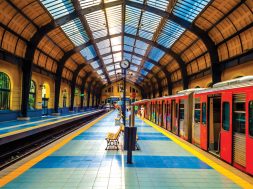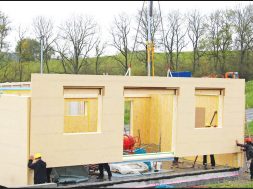Architecture needs cultural evolution not revolutions
“We must evolve. Enough pride heritage, enough languish crafts movement. We have to transform,” comments Kumar Ravindra, Principal Architect, PRAGRUP
Architect Kumar Ravindra is the principal and one of the founders for the research charette architecture studio at PRAGRUP. His innovation to urban design directions for academia, technology campus, mixed use and residential enclaves are recognised. In a conversation with ACE Update, Architect Ravindra discusses why it is important that we have to be opinionated in architecture.
Journey in the field of ArchitectureInitially the interest was to be an artist. I wanted to prioritise the field of fine arts and look at potentials for engineering designs. This happened mostly in 1987. This was not so natural for students at ninth grade. But as destiny concluded I worked with students of architecture who asked me help them with their portfolio. That gave me a huge introduction to the field of architecture. In fact when I was in 10th and 11th grade, I started drawing floor plans, elevations and building visuals. I was educated to architecture. This initiated me to become an architect. After my post graduation, I lived in Bangalore, also for a very short stint in Ahmadabad. I have also worked in Australia for a project specific training diploma in building skin engineering. We started off on the mantle of wanting to be the Gaga (as architecture record defines) of architecture and change the practice, very early. We were hyped by other larger offices in Bangalore and other cities to support them as design heads and be design concept consultant. Few years later, I associated with VA Group became the director. Thanks to my peers and principles, this paradigm shift brought about a huge change in what I was trying to do for a timeless way to build. There was an opportunity to manage and design very large projects. Purging and participating more on competition requests, I was very excited to win many. We won five projects consecutively at the national level. We benchmarked the radical shift for a software campus. We made new icons for Bangalore.
We won two international competitions on academic interventions. It became a whole new unitisation of a body of work, versatile and investigative entourage. The impetus took the surge forward and what we were doing encouraged more confidence. This was more accurate for our abilities and more qualified further on the kind of work we could produce.
Challenges facedI think in India the biggest challenge is to deal with the educated people. I feel non-descript education in this country has done awkward harm. Not that I read education as demeaning but the quality and kind is very important. Somehow the Indian personification has never been able to bridge the accuracy level between new urbanism and the old vernacular.
We are still a mammoth village. We are lost between aspiration and expectations. Every time when we do a project we are literally reinventing everything. We have to reinvent the same structures, wall structures, skin making, and the experience of light. I understand in architectural design. There will be innovation in terms of new idea. But we struggle making inventions at the fundamental. That has been my biggest apathy. Struggle to educate the team which executes and also educate the team which supports me as an architect. To educate my own office I need to rise and awaken the level of expectation. To draft, draw and deliver is just the language, not ability. There is a huge struggle in our human occupation as a country. We need a cultural evolution not revolutions. We need to evolve drastically. This has been my biggest struggle. We must evolve. Enough pride heritage, enough languish crafts movement. We have to transform. Remarkable achievements Activism in architecture, the green passive revolution, and my work with non profits on education and rural India gave me a huge satisfaction. My passion to host concerts and my affection to encourage and sponsor research gave me the foundations. The building emerged out of this life as some large campus design investigations that we have built for many a corporate like Infosys, iGATE, GE, Astra, ABB and so forth in many locations was a huge ordeal. I think this has been a benchmark in terms of experience in building — the same project at the same site for almost 9 years in parts.
It is not only an evolution of the clients’ aspiration of what they want in a campus, but also as a parallel to their industry as it grows within their own infrastructure. Their team aspirations are an advantage for us to evolve our design and understanding. These long stretched projects have been a benchmark for me.
The other award that I am proud of is the Nirlon Campus which we built in Mumbai, built over a period of 6 years. It won awards for 4 consecutive years for space design. This campus gave us immense satisfaction. The client extremely articulate and capable to understand his aspirations, and the need was immense to deliver quality. He was qualified to exercise discretion. I think projects like John Welch Centre for GE gave me great satisfaction. I was an example of technology plus architecture.
Even the smallest houses I built for a school which we run in the outskirts of Bengaluru gave me immense satisfaction. The school houses was for 350 kids from 8th grade to 12th grade and made of reused stone slabs, and that also framed using steel elements from scrap. It’s not the cost of the project that matters or the scale, but the ideation matters. When you want light to appear in a certain way, you want the space to give you certain joy, or when you achieve that bridge between reality and imagination, regardless of skill lacuna, you see the ecstasy and satisfaction for the work that we can do.
Awards in architecture We won the award for the best residential building over two consecutive years for a very large homes one in Bangalore and the other in Hyderabad. We also won an award for the best residence in an international web space for an 800-sq.-ft. home. The Times Property Award for commercial building in Bengaluru and for the business development space in Mumbai. We have also won green building accreditation for many projects in Pune, Delhi and Trivandrum. The resort which we did in Mysore and Bandipur won appreciation. Future outlookWe Indians are strange. There are two parts of Asia. You find people coming from a completely different energy as India and the other as China. It is very difficult to predict what will bring about change in terms of our own internal infrastructure. We can influence change for the rest of the planet in our sustainability quest in passive abilities. But these are big questions, and it is very difficult to predict. We need consciousness of not just energy and environment but consciousness of the act of consumerism. The necessity is to have clean cities. We do not want our cities and homes to decay and dilapidate. There has to be civic order. We, as architects, are able to transform and feel the need to renationalise our own existence. We need to find answers to our own methods of globalisation. My prediction to the future would be to introspect and investigate the idea of renationalisation not decay. Worst architectural designs in India The state assembly building in Bengaluru is an awkward oxymoron. People might spend the best money, best material and best artisans on a project, but if you don’t exhibit it accurately you can completely signal a wrong communication to a community. We might have the best craftsman and material, but if we build the wrong idea of architecture, we will communicate blunder. In India you have to fear the educated than the uneducated. The guy who knows to speak the best language and who can communicate the best may not be an angel. You have to fear him more.
Some buildings in Bandra-Kurla (Mumbai) Complex are complete monsters. They could be anywhere on the planet but not in Mumbai. The works built by some overseas practices are completely ridiculous. Post colonization, architecture is on a depressing genre. Post 200 years of British rule, we still live as people who love ornate expression. We need to have our politics accurate. It is important that we have to be opinionated. We cannot live ignorance. Austere is the word to relearn.
8
Cookie Consent
We use cookies to personalize your experience. By continuing to visit this website you agree to our Terms & Conditions, Privacy Policy and Cookie Policy.









